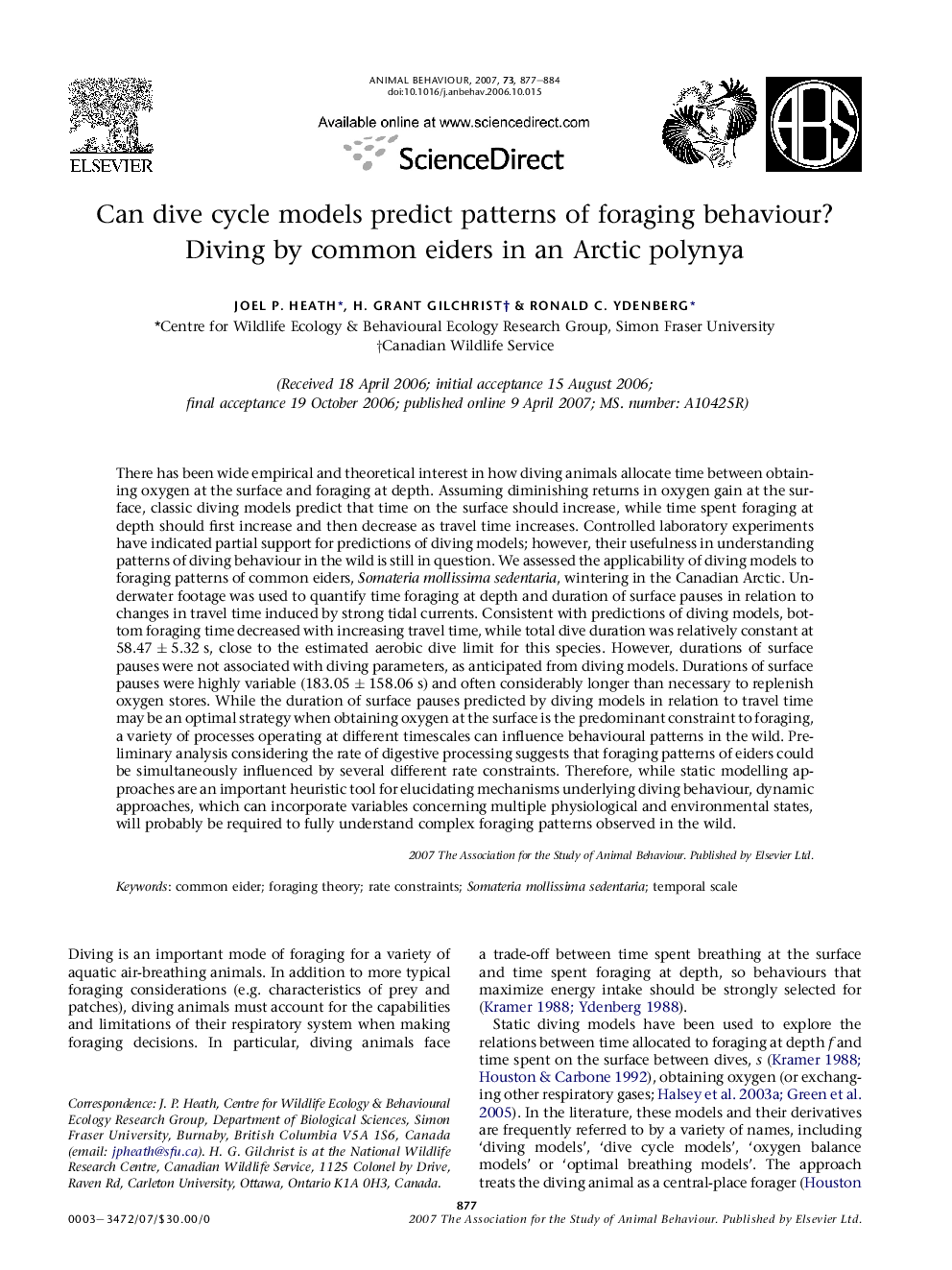| کد مقاله | کد نشریه | سال انتشار | مقاله انگلیسی | نسخه تمام متن |
|---|---|---|---|---|
| 2418999 | 1104362 | 2007 | 8 صفحه PDF | دانلود رایگان |

There has been wide empirical and theoretical interest in how diving animals allocate time between obtaining oxygen at the surface and foraging at depth. Assuming diminishing returns in oxygen gain at the surface, classic diving models predict that time on the surface should increase, while time spent foraging at depth should first increase and then decrease as travel time increases. Controlled laboratory experiments have indicated partial support for predictions of diving models; however, their usefulness in understanding patterns of diving behaviour in the wild is still in question. We assessed the applicability of diving models to foraging patterns of common eiders, Somateria mollissima sedentaria, wintering in the Canadian Arctic. Underwater footage was used to quantify time foraging at depth and duration of surface pauses in relation to changes in travel time induced by strong tidal currents. Consistent with predictions of diving models, bottom foraging time decreased with increasing travel time, while total dive duration was relatively constant at 58.47 ± 5.32 s, close to the estimated aerobic dive limit for this species. However, durations of surface pauses were not associated with diving parameters, as anticipated from diving models. Durations of surface pauses were highly variable (183.05 ± 158.06 s) and often considerably longer than necessary to replenish oxygen stores. While the duration of surface pauses predicted by diving models in relation to travel time may be an optimal strategy when obtaining oxygen at the surface is the predominant constraint to foraging, a variety of processes operating at different timescales can influence behavioural patterns in the wild. Preliminary analysis considering the rate of digestive processing suggests that foraging patterns of eiders could be simultaneously influenced by several different rate constraints. Therefore, while static modelling approaches are an important heuristic tool for elucidating mechanisms underlying diving behaviour, dynamic approaches, which can incorporate variables concerning multiple physiological and environmental states, will probably be required to fully understand complex foraging patterns observed in the wild.
Journal: Animal Behaviour - Volume 73, Issue 5, May 2007, Pages 877–884